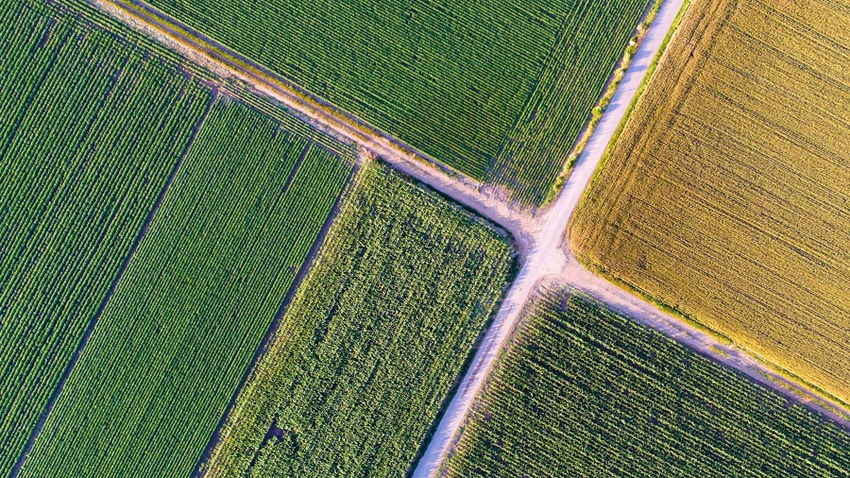
Acreage is on top of everyone’s mind ahead of today’s March 31 Prospective Plantings report from USDA. USDA’s National Agricultural Statistics Service (NASS) releases its first farmer survey of the 2023 growing season, providing the most accurate and up to date look at where prices might be headed in the 2023/24 calendar year.
Additionally, NASS will publish its Quarterly Grain Stocks report, chronicling grain usage from December 1, 2022 to March 1, 2023. That should breathe some fresh life into old crop prices following its release.
As always, the Farm Futures team will be covering USDA’s data release live! We will have real-time updates at our website (FarmFutures.com) and on all of our social platforms (@FarmFutures). USDA publishes both reports at 11AM CDT – check back with us then for the latest insights and analysis!
In the meantime, here is a brief preview of what to expect from today’s reports.
Acreage excitement
It’s been no secret that global corn stocks are tight and profit margins remain quite lucrative for corn budgets headed into the 2023 growing season. And that is the overarching sentiment the market is banking on headed into today’s reports.
The new-crop price ratio also supports corn acres in 2023, although that metric severely discounts steep fertilizer prices for corn production (especially outside of the “I”-states). The Farm Futures estimate is the only one to buck that trend and call for lower corn acres, as I have discussed ad nauseam in my #Plant23 Primer.
The most noteworthy item to take away from these corn guesses is just how confident the market is in corn acres expanding this year. If USDA’s corn number comes in below the trade average of 90.9 million acres, expect to see some bullish price action dominate the corn complex today.
Soybean acres are also expected to increase this year – a likely scenario considering the rise of double crop rotations with winter wheat, high input costs for competing corn acres, and fewer cotton acres expected to be planted in the South. Soybean crop budgets have also been extremely competitive against their corn counterparts through early spring.
It is worth noting that the trade range of guesses for soybean acres is atypically narrow for a March 31 report (even with the higher Farm Futures’ value factored in). This means that if USDA deviates substantially from the average trade guesses, the soybean complex could see some wild price action today.
There could be bullish price opportunities for wheat if acres continue to shrink from January’s high seedings estimate of 37.0 million acres for winter wheat. But the trade also isn’t overly eager about spring wheat and durum acreage expansion, so that could give rise to bullish price action if the acres come in lower than what the trade is anticipating.
Markets are prepared for an acreage expansion, with only cotton and oat acreage expected to be lower than last year in today’s report. This is a rather bearish sentiment that the market has priced in ahead of the data release and could favor bullish biases if USDA’s acreage estimates don’t meet the trade’s demands.
As I’ve written before, U.S. crop ground is largely tapped out, which doesn’t give a lot of extra room to the expansion trends currently underway in Brazil, Ukraine (well, until this past year anyways), and Russia. Hay acres tend to act as a residual category, giving and absorbing the extra crop ground as needed.
I couldn’t derive reliable hay acreage estimates from our March 2023 Farm Futures survey but based on our data I would not be surprised if USDA went higher on hay acreage in today’s report. And that automatically favors bullish price action for all other crops because it lowers the upward cap on acreage allowed for each one.
The close proximity of the trade estimates to USDA’s current estimates published at the 2023 Ag Outlook Forum suggest that markets really aren’t sure how acreage will shake out this year. That opens the door to more price volatility ahead of us today and means that we all need to be prepared to be surprised by whatever acreage estimates USDA puts forth this morning.
Quarterly stocks report
The market is bullish with regards to the quarterly stocks report ahead of USDA’s data release today. It’s no secret that global and domestic grain and oilseed stocks are at multi-year lows, which will likely be reflected in the March 1, 2023 stocks reading.
The March 2023 Farm Futures survey suggests that over the past couple months, farmers have been pre-pricing out crops more aggressively than last year in anticipation of lower commodity prices. And strong cash prices currently being bid around the Heartland mean that processors are still consuming those raw grains and oilseeds at a steady clip.
So I’m inclined to side with the trade on this one and would be very surprised if USDA found much extra grain lying around the country in today’s survey. The quarterly grain stocks report isn’t always a market-mover, but it has the potential to be one this quarter if USDA throws us any surprises.
A note on the Farm Futures survey
This year, we had 801 survey responses for our March 2023 Farm Futures survey that we used to derive our acreage estimates. We conducted an email questionnaire across our farmer reader audience between March 1 – March 14. We had strong response rates from all parts of the Heartland.
Admittedly, I am worried about how closely our survey values will match USDA’s in the March 31 report, especially after seeing so many of our estimates at the extreme ends of all the trade ranges. I was honestly surprised by how much these survey findings deviated from the January 23 findings, which were more in line with the current average trade estimates.
But I must keep reminding myself – history is on our side with this one. Last year, Farm Futures was the only analyst estimate to correctly guess that 2022 soybean acres would be projected higher than corn.
And this survey had a strong track record long before I took over this survey from Bryce Knorr in 2020. Our r-squared value of 0.81 for corn acreage in the Prospective Plantings report is a strong indicator of our consistent predictions from this survey over the years (statistics note: the closer your r-squared is to 1, the more reliable – or robust – your dataset is believed to be when making predictions).
Corn | ||||
Official Farm Futures Estimate | USDA March Prospective Plantings | Absolute value differences with USDA March31 | ||
2023 | 87.677 | |||
2022 | 90.379 | 89.490 | 1.0% | |
2021 | 93.596 | 91.144 | 2.7% | |
2020 | 96.370 | 96.990 | 0.6% | |
2019 | 90.855 | 92.792 | 2.1% | |
2018 | 90.000 | 88.026 | 2.2% | |
2017 | 90.300 | 89.996 | 0.3% | |
2016 | 90.000 | 93.601 | 3.8% | |
2015 | 88.340 | 89.199 | 1.0% | |
2014 | 92.060 | 91.691 | 0.4% | |
2013 | 97.430 | 97.282 | 0.2% | |
2012 | 95.100 | 95.864 | 0.8% | |
2011 | 91.400 | 92.178 | 0.8% | |
2010 | 87.300 | 88.798 | 1.7% | |
2009 | 82.460 | 84.986 | 3.0% | |
2008 | 87.700 | 86.014 | 2.0% | |
r^2 vs USDA March | 0.81 | Average | 1.5% |
Our predictions are even more robust for soybean acreage guesses in March. The r-squared of 0.91 statistically proves our survey’s reliability over time. And our accuracy to USDA’s March 31 soybean acreage estimates has also improved noticeably over the years.
Soybeans | |||
Official Farm Futures Estimate | USDA March Prospective Plantings | Absolute value differences with USDA March | |
2023 | 89.620 | ||
2022 | 92.208 | 90.955 | 1.4% |
2021 | 88.510 | 87.600 | 1.0% |
2020 | 82.670 | 83.510 | 1.0% |
2019 | 85.916 | 84.617 | 1.5% |
2018 | 91.500 | 88.982 | 2.8% |
2017 | 89.000 | 89.482 | 0.5% |
2016 | 82.200 | 82.236 | 0.0% |
2015 | 87.300 | 84.635 | 3.1% |
2014 | 82.930 | 81.493 | 1.8% |
2013 | 79.090 | 77.126 | 2.5% |
2012 | 76.000 | 73.902 | 2.8% |
2011 | 78.500 | 76.609 | 2.5% |
2010 | 79.400 | 78.098 | 1.7% |
2009 | 80.730 | 76.024 | 6.2% |
2008 | 71.800 | 74.793 | 4.0% |
r^2 vs USDA March | 0.91 | Average | 2.2% |
It is worth noting, that our organization’s survey is one of the only trade estimates that derives its acreage guesses from farmer data. Other trade guesses tend to be just that – gut feelings that analysts may or may not have about where acreage might be going this year.
This emphasizes the significance of USDA-NASS’s farmer survey work throughout the growing season. Left to its own devices, the market can’t easily determine acreage outlays on its own. But the survey methodology conducted by NASS, as well as its far superior statistics capability compared to our little survey, should remind farmers to be grateful to have such a reliable government entity publishing this information for markets.
Here is my #Plant23 Primer – a collection of articles about the potential challenges farmers are facing ahead of the 2023 growing season and how that will factor into acreage decisions.
Mother Nature always has the final say in acreage and yield outcomes. Here is what she has on the horizon headed into the 2023 planting push.
Fertilizer prices have come down some, but their elevated levels will still cause some acreage shifts again this year.
Here is why spring crop insurance prices and the new crop price ratio are helpful, but why there is more to consider this year when making acreage decisions.
A deep dive into USDA’s track record on March 31 Prospective Plantings – and what could cause future changes in the June 30 Acreage report.
If you’re OCD like me and want even more of a preview of what to expect today, here are a few good pieces that I have benefited from reading. And I would highly recommend reading anything Karen Braun from Reuters has written or posted on Twitter about the Prospective Plantings report.
Karen Braun analyzes the pre-report trade estimates and weighs USDA’s chances for a surprise.
Bryce Knorr is keeping a close eye on the Quarterly Grain Stocks report to track old crop usage and disappearance rates.
Advance Trading’s Brady Huck is eying tight grain stocks and creating options strategies to be prepared for any major price swings.
About the Author(s)
You May Also Like






